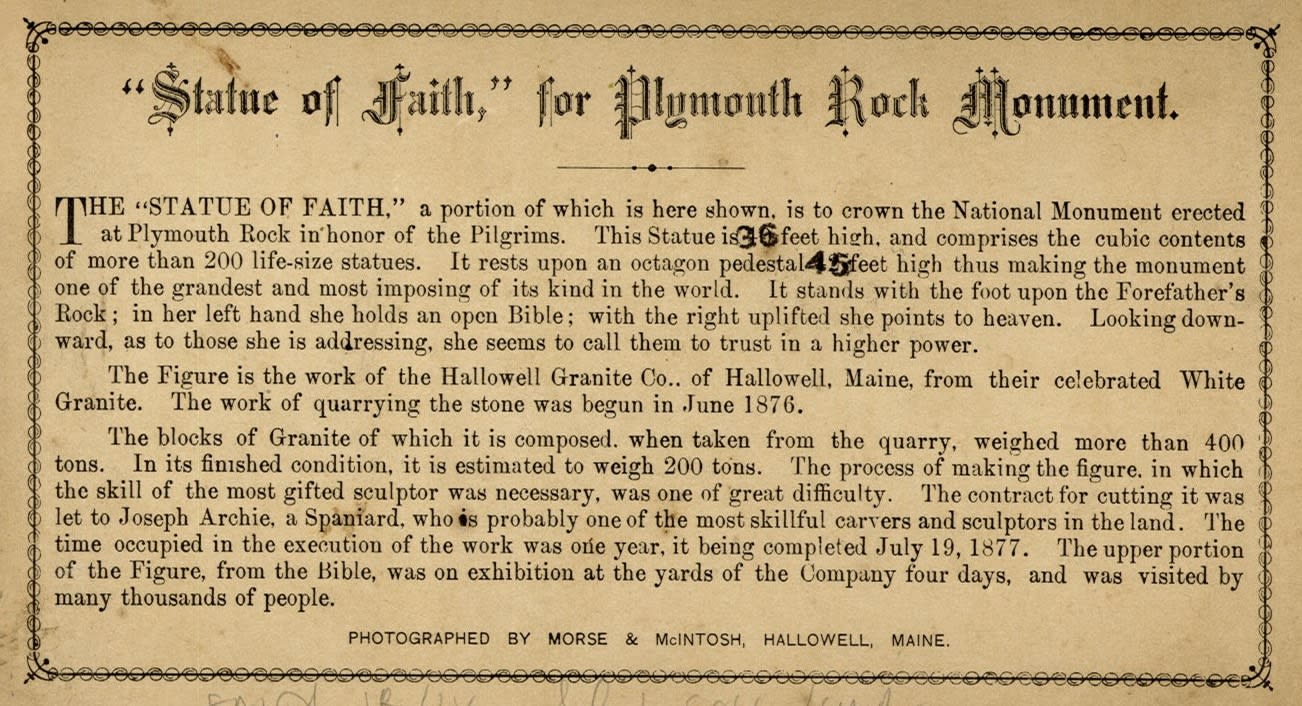Morse & McIntosh
Cabinet cards showing the Construction of the "Statue of Faith" at Plymouth Rock Monument, 1877
Albumen prints (2)
8 x 4 1/2 inches
Printed captions verso.
Printed captions verso.
Sold
Further images
The monument was initially envisioned by Hammatt Billings, a Boston architect, illustrator, and sculptor, to stand at a towering height of 150 feet (46 meters), similar to the Colossus of...
The monument was initially envisioned by Hammatt Billings, a Boston architect, illustrator, and sculptor, to stand at a towering height of 150 feet (46 meters), similar to the Colossus of Rhodes. Before his death in 1874, Billings downscaled the design of the monument so that it could be be entirely constructed from granite sourced from Hallowell, Maine. These photographs, taken by Morse and McIntosh (also of Hallowell, Maine), depict the statue in situ as it was being carved, prior to its transport to Plymouth Rock. In the lower left of each image, a framed print can be seen, likely present as a point of reference for the stonemasons.
It is thought to be the world's largest solid granite monument.
It is thought to be the world's largest solid granite monument.







